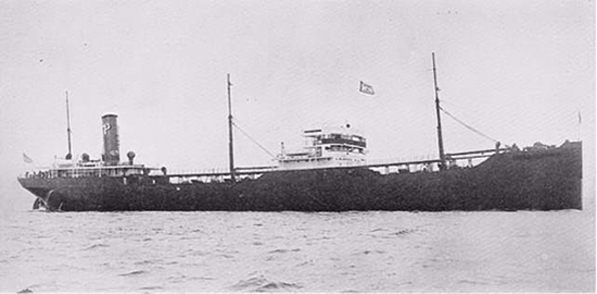Allan Jackson

Ship Stats
Location: Last known position: 35°00'00.0"N, 74°19'59.9"W (35.00000, -74.33333)
Depth: Not officially located
Vessel Type: Tanker
Length: 435 feet Breadth: 56 feet
Gross Tonnage: 6,635 Cargo: 72,870 barrels of crude oil
Built: 1921, Bethlehem Fairfield Shipbuilding Corp. Ltd., Alameda, California, USA
Hull Number: Unknown Port of Registry: Wilmington, Del., USA
Owner: Standard Oil Company, New Jersey
Lloyd's Register Details: Steel hull, fitted for oil fuel, two decks, web framing, carrying petroleum in bulk, triple expansion three cylinder engine
Former Names: Crampton Anderson (Standard Oil Company, New Jersey, 1921-1931)
Date Lost: January 18, 1942
Sunk By: U-66 Survivors: 13 of 35 survived (22 dead)
Data Collected on Site: No data collected
Significance: First merchant ship casualty of the Battle of the Atlantic off North Carolina's coast
Wreck Site
The site of Allan Jackson has not been located in any official capacity. The location, according to reports, possibly suggests the vessel sinking in deep water, making it difficult to locate and provide information for assessment.
Historical Background
The Allan Jackson was built in 1921, by the Bethlehem Fairfield Shipbuilding Corporation in Alameda, Calif., and it was originally named Crampton Anderson. The ship worked on the West Coast of the United States until it was transferred to the East Coast in 1931, and renamed Allan Jackson. At the beginning of 1942, Allan Jackson, was on route from Cartagena, Columbia to New York, New York, with a cargo of 72,870 barrels of crude oil. Traveling north near the coast of North Carolina, Allan Jackson would shortly become the first of many lost vessels due to German U-boat attacks in these waters.
On the early morning of January 18, 1942, the 35 man crew of Allan Jackson awoke to an explosion from a torpedo crashing into the starboard side of the vessel. The damage was reported as minor, but a second torpedo struck closer to the bow and the force of the explosion split the tanker into two. The cargo of oil spilled into the water, igniting and spreading over an area of about a half a mile around the vessel.
The only lifeboat available was lowered and eight members of the crew jumped inside. Unfortunately, most of the crew died in the fire or as a result of being pulled beneath the propeller. The men in the life boat used the oars to push against the stern to avoid sudden death. Within ten minutes, the tanker sank. Only 13 of the listed 35 crewmen survived. The sinking of Allan Jackson is quite significant in that it was the first ship lost in North Carolina during World War II.

